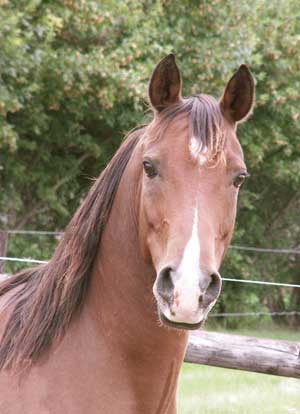“Giving cortisone (corticosteroid drugs) to horses at risk for laminitis is contraindicated (not advisable) as it causes the retention of fluids, which is the same laminitis-triggering effect as adrenal-released cortisol. Cortisol causes the body to retain sodium. Since water follows sodium, fluid migrates from the blood vessels into the tissues, producing further swelling and foot pain. If swelling and pain are not immediately relieved, laminitis may progress to pressure necrosis and founder.”
“The horse’s system can give its own injection of cortisol from the adrenal glands located in front of the kidneys. With ingestion of an excessive amount of carbohydrates, or sugars, an increase in insulin and cortisol secretion occurs, which results in tissue edema/swelling by the same method that occurs when cortisone is artificially administered.”
“Any stressful event, including endocrine and environmental changes, may also cause the release of cortisol by the adrenal glands, which results in edema/swelling due to the retention of sodium. When the edema/swelling is in a closed vault such as the horse’s foot, there is great pain and tissue damage.”
Excerpted from the book Laminitis & Founder: Prevention and Treatment for the Greatest Chance of Success by Dr. Frank Gravlee and Dr. Doug Butler.
Dr. Frank Gravlee graduated from Auburn University School of Medicine and practice d veterinary medicine for several years before attending graduate school at MIT . During a three -year residency in nutritional pathology he received a masters degree in nutritional biochemistry and intermediary metabolism. In 1973, he founded Life Data Labs to determine equine nutritional deficiencies through laboratory testing, and developed individualized fee ding programs to correct the deficiencies he discovered. After ten years of research, he launched Farrier’s Formula. www.lifedatalabs.com








